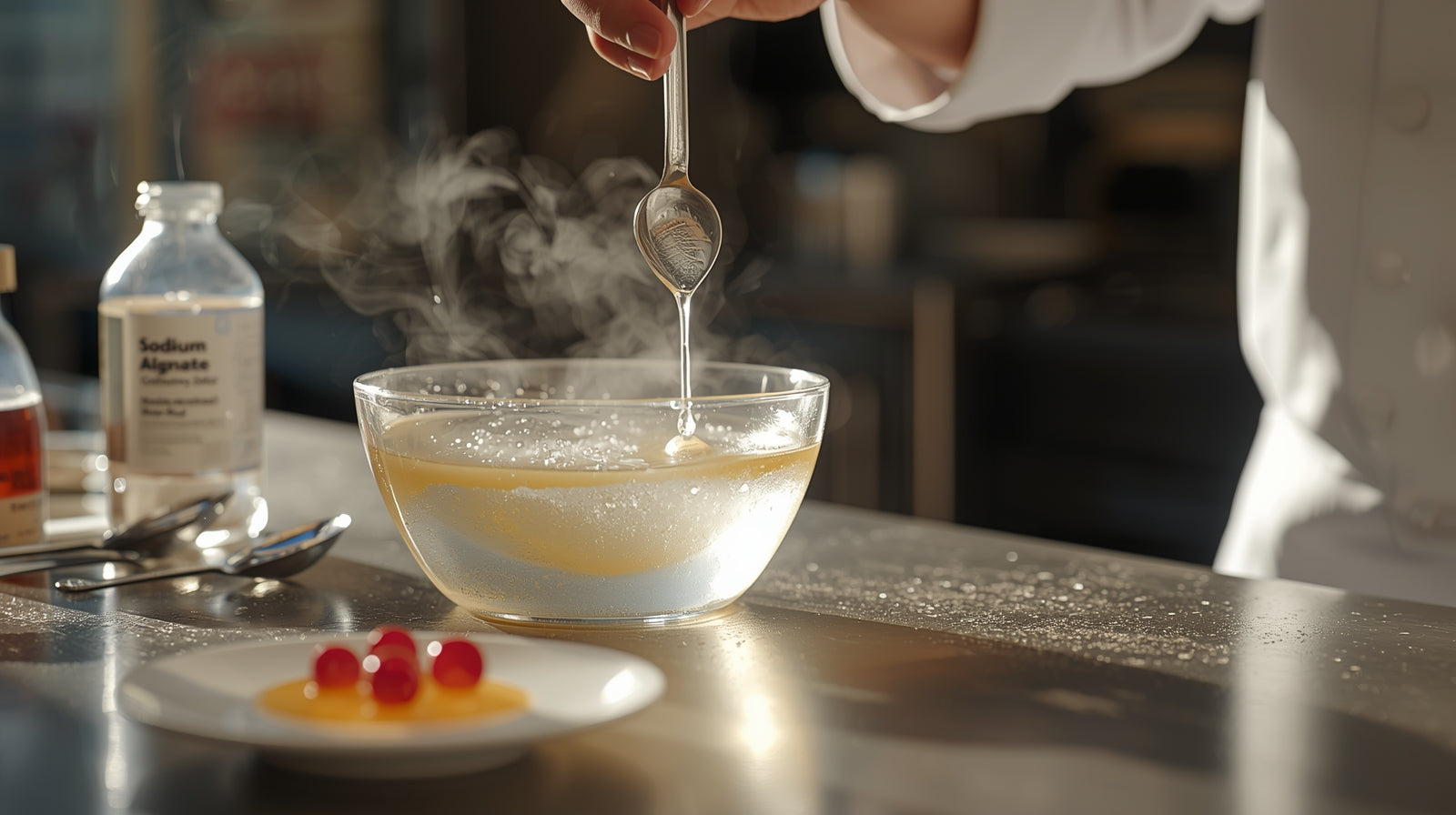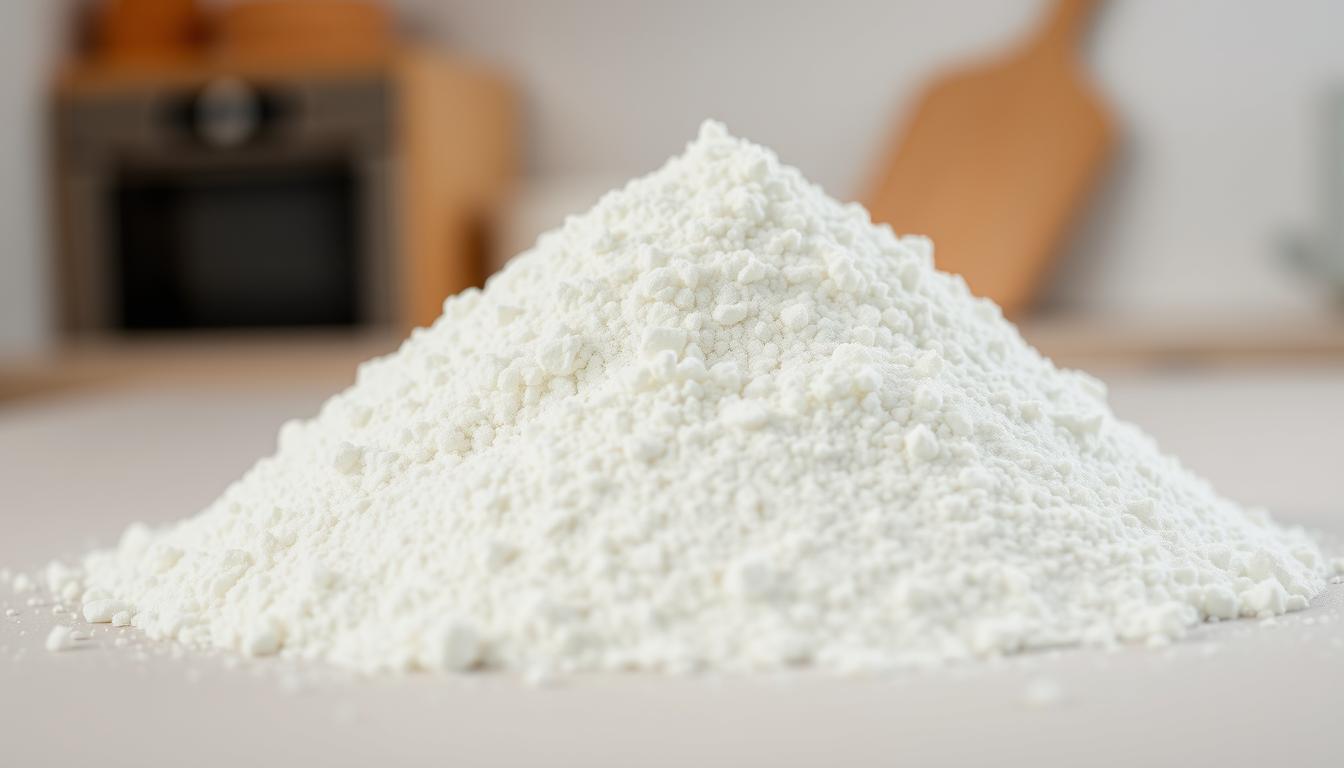
The Science of Apple Pie Filling: Why Some Thickeners Fail
SUBSCRIBE TO OUR BLOG
Promotions, new products, and recipes.
Few things are more disappointing than cutting into a freshly baked apple pie only to find a soupy mess instead of that perfect, jammy filling that holds its shape. The culprit? Thickener failure. Understanding the science behind apple pie filling thickeners can transform your baking from frustrating to foolproof. In this guide, we'll explore why some thickeners fail, the chemistry behind successful thickening, and how to choose the right option for your perfect slice.
Types of Thickeners: Understanding Your Options
Not all pie filling thickeners are created equal. Each has unique properties that affect texture, flavor, and stability. Let's examine the most common options and their chemical characteristics.

| Thickener | Pros | Cons | Best For |
| All-Purpose Flour | Readily available, inexpensive, stable when frozen | Cloudy appearance, starchy taste if undercooked, requires more volume | Basic pies, traditional recipes |
| Cornstarch | Stronger thickening power, clearer result than flour | Breaks down with prolonged heat, can become gummy | Pies served same day, shorter baking times |
| Tapioca (Quick-cooking) | Clear, glossy finish, freezes well | Slightly chewy texture, needs pre-soaking | Juicy fruits, pies that will be frozen |
| Instant ClearJel | Thickens without heat, stable across temperatures, no clouding | Less available in stores, more expensive | Professional results, frozen pies |
| Pectin (commercial) | Natural thickener, works well with acidic fruits | Requires precise sugar ratio, can create overly firm texture | Low-sugar pies, preserves |
The choice of thickener significantly impacts your pie's final texture. Flour creates a homestyle, slightly opaque filling, while modified starches like Instant ClearJel produce a clearer, more restaurant-quality result. For apple pies specifically, the natural pectin content in apples interacts with your chosen thickener, affecting how much you'll need.
The Science Behind Thickening: How It Actually Works
Starch Gelatinization
Most thickeners work through a process called gelatinization. When starch molecules (from flour, cornstarch, or tapioca) are heated in liquid, they absorb water and swell, creating a network that traps liquid and forms a gel. This process begins at around 140°F (60°C) and completes at about 180°F (82°C), though exact temperatures vary by starch type.
Edmund McCormick, food science author, explains: "Starch granules act like tiny sponges, absorbing water and swelling to many times their original size, eventually bursting and releasing long molecules that form a mesh throughout the liquid."
Pectin Activation
Apples naturally contain pectin, a complex carbohydrate that forms gels in the presence of sugar and acid. During baking, this pectin breaks down and then reforms into a network that helps thicken the filling. Different apple varieties contain varying amounts of pectin, which is why some varieties make better pie apples than others.

Different apple varieties contain varying levels of natural pectin
Acid-Thickener Interactions
The pH level of your filling affects how thickeners work. Acidic ingredients (like lemon juice or certain apple varieties) can either enhance or inhibit thickening, depending on the thickener used. For example, acid strengthens pectin gels but can weaken cornstarch's thickening power.
Why Thickeners Fail: Common Pitfalls
Temperature Problems
Both overheating and undercooking can cause thickener failure. Cornstarch, for instance, begins to break down after prolonged heating, causing a once-thick filling to become watery again. Conversely, undercooking means the starch never fully gelatinizes, resulting in a thin filling with raw starch flavor.
pH Imbalances
Apple varieties vary significantly in acidity. Tart apples like Granny Smith have a pH around 3.2, while sweeter varieties like Red Delicious can be closer to 4.0. This acidity difference affects thickening power—especially with cornstarch, which loses effectiveness in acidic environments.
"The most common mistake bakers make is not adjusting their thickener based on the acidity of their apple variety. Tart apples require different handling than sweet ones."
Incorrect Ratios and Substitutions
Thickeners are not interchangeable at equal measurements. For example, you need about twice as much flour as cornstarch to achieve the same thickening power. When recipes are adapted without proper conversion, the result is often a filling that's either too runny or too gummy.

Different thickeners require different amounts for equivalent results
Syneresis: The Weeping Phenomenon
Syneresis occurs when liquid separates from the gel structure after the pie is baked, creating a watery layer beneath the filling. This commonly happens with cornstarch-thickened pies that are refrigerated or when the ratio of thickener to liquid is incorrect.

Syneresis: When liquid separates from the gel structure after baking
Solutions: Mastering Apple Pie Thickeners
Best Practices by Apple Variety
| Apple Variety | Characteristics | Recommended Thickener | Amount (for 8 cups apples) |
| Granny Smith | Very tart, firm, low moisture | Cornstarch or Instant ClearJel | 1 Tbsp + 1 tsp |
| Honeycrisp | Sweet-tart, juicy, holds shape | Tapioca or Instant ClearJel | 2 Tbsp or 1 Tbsp + 1 tsp |
| McIntosh | Soft, very juicy, breaks down | Flour + Cornstarch blend | ¼ cup flour + 1 Tbsp cornstarch |
| Golden Delicious | Sweet, moderate juice, softens | Tapioca | 2 Tbsp |
Pre-Cooking Method
Pre-cooking your filling is one of the most reliable ways to avoid thickener failures. This method allows you to control the consistency before it goes into the pie shell.

Pre-cooking apple pie filling allows precise control over thickness
Pre-Cooking Method Steps:
- Slice apples and toss with sugar, spices, and a bit of lemon juice
- Let sit for 30 minutes to release juices
- Drain juice into a saucepan and reduce by half
- Add thickener to the reduced juice and cook until thickened
- Combine with apples, cool slightly, then fill pie shell
Thickener Blends
Combining thickeners can give you the best properties of each while minimizing drawbacks. A popular blend is cornstarch with a small amount of tapioca, which provides both immediate thickening and long-term stability.
A custom thickener blend combines the benefits of multiple thickeners
Perfect Thickener Blend Recipe
For foolproof apple pie filling, try this custom blend:
- 2 tablespoons cornstarch
- 1 tablespoon quick-cooking tapioca (ground fine)
- 1 teaspoon Instant ClearJel (if available)
- 2 tablespoons sugar
Mix thoroughly and store in an airtight container. Use 3–4 tablespoons per 8-cup apple pie.
Real-Life Examples: Success vs. Failure
Case Study: The Runny Disaster

Sarah attempted an apple pie using only flour as a thickener with very juicy Honeycrisp apples. She added the flour directly to the cold filling mixture without allowing it to hydrate. The result: a soupy mess with raw flour taste.
What went wrong: Insufficient thickener for juicy apples, no pre-hydration of flour, and no time for proper gelatinization.
Case Study: The Perfect Slice

Michael used a blend of cornstarch and tapioca with Granny Smith apples. He macerated the apples first, then reduced the juice before adding back to the filling. The result: a perfectly sliceable pie with clear, jammy filling.
What worked: Appropriate thickener blend for the apple type, pre-treatment of juices, and proper cooking temperature.
"The difference between a good apple pie and a great one often comes down to how well you manage moisture and thickening. It's not just about adding thickener—it's about understanding the science of how it works with your specific ingredients."
Frequently Asked Questions
Can I fix a pie that's already baked if the filling is too runny?
If your baked pie has a runny filling, you have a few options:
- Return it to the oven at 350°F for 5–10 minutes to evaporate excess moisture
- Let it cool completely (at least 4 hours) as some thickeners set more as they cool
- For severe cases, you can remove the top crust, scoop out the filling, thicken it on the stovetop, then return it to the pie shell
How do different apple varieties affect thickening?
Apple varieties vary significantly in moisture content, pectin levels, and acidity:
- High-moisture varieties (McIntosh, Cortland) release more juice and require more thickener
- High-pectin varieties (Granny Smith, Northern Spy) naturally thicken better
- High-acid varieties (Granny Smith) can inhibit cornstarch's thickening power
For best results, use a blend of apple varieties or adjust your thickener based on the specific apples you're using.
Conclusion: The Perfect Apple Pie Filling

The perfect balance of flavor and texture in a well-thickened apple pie
Understanding the science behind apple pie filling thickeners transforms your baking from guesswork to precision. By selecting the right thickener for your apple variety, managing moisture content, and following proper techniques, you can achieve that perfect slice every time—one that holds its shape while remaining juicy and flavorful.
Remember that successful thickening is about balance. Too little thickener results in a runny mess, while too much creates a gummy, artificial texture. The goal is a filling that's jammy and cohesive while still highlighting the natural texture of the apples.

|
About the Author Ed is the founder of Cape Crystal Brands, editor of the Beginner’s Guide to Hydrocolloids, and a passionate advocate for making food science accessible to all. Discover premium ingredients, expert resources, and free formulation tools at capecrystalbrands.com/tools. — Ed |
Enjoyed this post? Subscribe to The Crystal Scoop
Food-science tips, ingredient know-how, and recipes. No spam—unsubscribe anytime.
- Choosing a selection results in a full page refresh.



